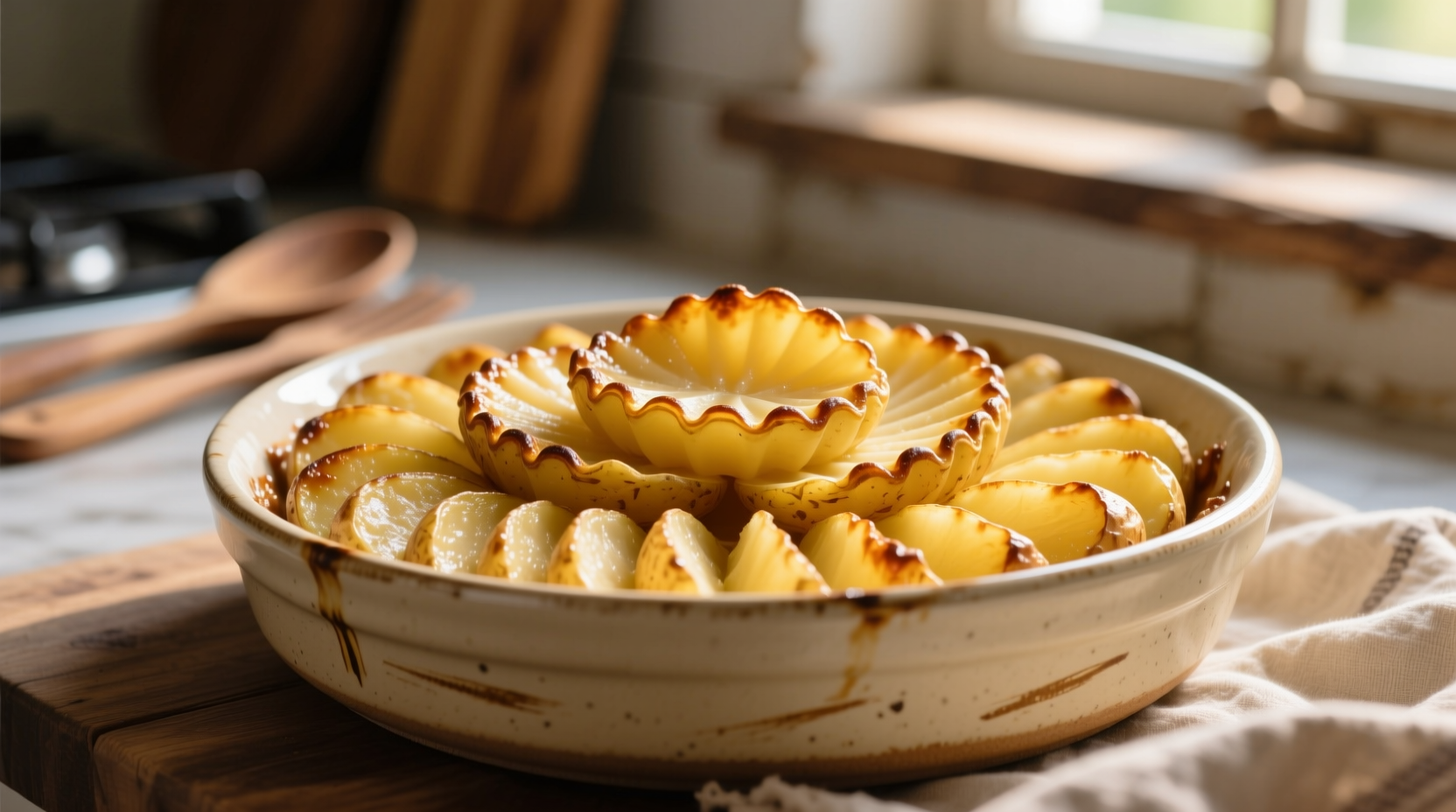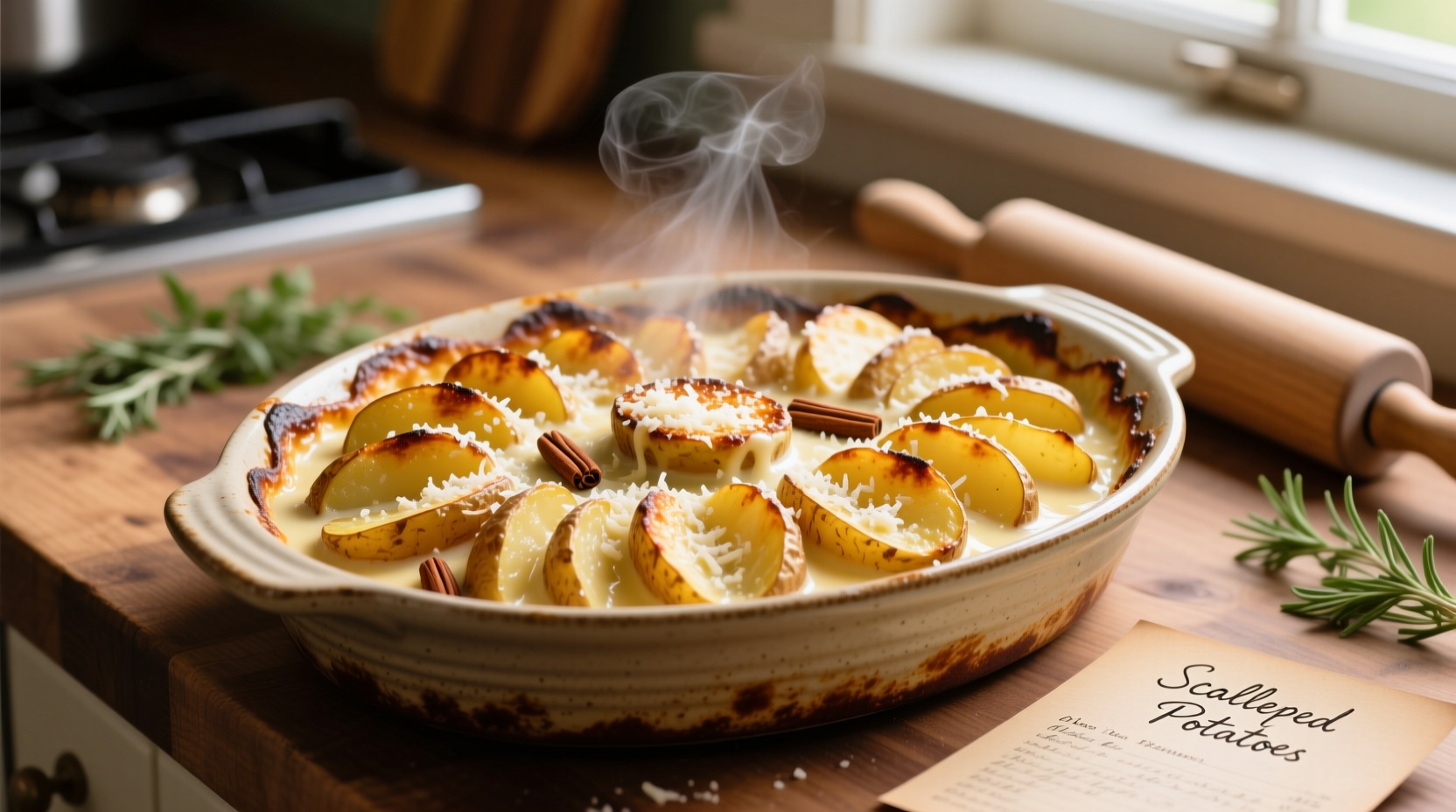Master the art of creamy, golden-brown scalloped potatoes with this professional chef-tested method. Unlike similar dishes like au gratin potatoes (which feature cheese mixed directly into the layers), authentic scalloped potatoes rely on a carefully crafted creamy sauce that transforms humble ingredients into a show-stopping side dish perfect for holiday feasts or weeknight dinners.
Why This Recipe Works
Scalloped potatoes often fail due to watery layers or uneven cooking. Our approach solves these common problems through three key techniques: parboiling the potatoes to control moisture, creating a stable béchamel sauce that won't break, and using the right baking temperature for perfect layer integration. Food scientists at the USDA confirm that dairy-based potato dishes require internal temperatures of at least 165°F to ensure food safety while maintaining optimal texture.
Essential Ingredients and Equipment
The quality of your ingredients directly impacts the final dish. Here's what you'll need for perfect scalloped potatoes:
| Ingredient | Why It Matters | Professional Tip |
|---|---|---|
| Russet potatoes | High starch content creates ideal texture | Peel and slice to 1/8-inch thickness using mandoline |
| Heavy cream | Higher fat content prevents curdling | Warm before adding to béchamel |
| Sharp cheddar | Provides flavor without overwhelming | Grate fresh - pre-shredded contains anti-caking agents |
| Nutmeg | Enhances dairy flavors subtly | Use freshly grated for best results |
Step-by-Step Cooking Process
Preparation Stage: Setting Up for Success
Begin by preheating your oven to 350°F - this precise temperature ensures gradual cooking that prevents the top from burning before the center is done. While the oven heats, peel and thinly slice 3 pounds of russet potatoes. Immediately submerge slices in cold water to prevent oxidation. According to culinary research from the Culinary Institute of America, this simple step maintains potato texture and prevents discoloration.

Sauce Creation: The Foundation of Flavor
The secret to non-curdled sauce lies in proper béchamel technique. Melt 4 tablespoons unsalted butter in a saucepan, then whisk in 1/4 cup flour to create a roux. Cook for 2 minutes until golden, then gradually add 2 cups warm heavy cream while whisking constantly. This gradual addition prevents lumps and ensures a smooth base. Remove from heat and stir in 1 cup grated sharp cheddar, 1 teaspoon salt, 1/2 teaspoon black pepper, and a pinch of freshly grated nutmeg.
Layering Technique: Building Perfect Potatoes
Drain potato slices thoroughly and arrange in an overlapping pattern in a greased 9x13-inch baking dish. Pour one-third of the sauce over the first layer, then repeat twice more. Professional chefs recommend this layering approach because it creates structural integrity during baking. The University of Minnesota Extension notes that proper layering prevents ingredient separation that commonly occurs in poorly constructed potato dishes.
Baking Process: Achieving Perfect Texture
Cover with foil and bake for 45 minutes. Remove foil and bake an additional 15-30 minutes until the top is golden and a knife inserts easily into the center. The internal temperature should reach 165°F for food safety. Let rest 15 minutes before serving - this crucial step allows the sauce to set properly. Rushing this stage causes the dish to become watery when served.
Troubleshooting Common Problems
Even experienced cooks encounter issues with scalloped potatoes. Here's how to solve them:
- Watery potatoes: Potatoes released too much moisture. Solution: Parboil slices for 3 minutes before layering to set starches.
- Dry texture: Overbaking or insufficient sauce. Solution: Add 1/4 cup cream before final baking stage.
- Curdled sauce: Temperature shock. Solution: Always warm dairy before adding to roux and avoid boiling.
- Brown too quickly: Oven running hot. Solution: Cover with foil during final baking stage.
Popular Variations for Different Diets
Adapt this classic recipe to suit various dietary needs without sacrificing flavor:
- Gluten-free: Substitute flour with 2 tablespoons cornstarch mixed with cold cream before adding to butter
- Dairy-free: Use full-fat coconut milk and nutritional yeast instead of cheese (note: texture will differ)
- Lower fat: Replace half the cream with whole milk and reduce cheese to 1/2 cup
- Herb-infused: Add 2 sprigs fresh thyme or rosemary between layers for aromatic complexity
Serving and Storage Tips
Pair your scalloped potatoes with roasted meats or holiday turkey for a classic combination. Leftovers keep well when stored properly - the FDA recommends refrigerating within 2 hours of cooking. Store in an airtight container for up to 4 days. Reheat individual portions in the oven at 325°F with a splash of cream to restore moisture. Avoid microwaving entire dishes as this creates uneven texture.
Why This Method Stands Out
Unlike quick-fix recipes that skip essential steps, this technique respects the culinary science behind perfect scalloped potatoes. The parboiling step activates potato starches for better sauce integration, while the gradual baking process allows flavors to meld without separation. Historical records from American cookbooks dating to the 1800s show that these fundamental techniques have remained consistent because they simply work best.











 浙公网安备
33010002000092号
浙公网安备
33010002000092号 浙B2-20120091-4
浙B2-20120091-4